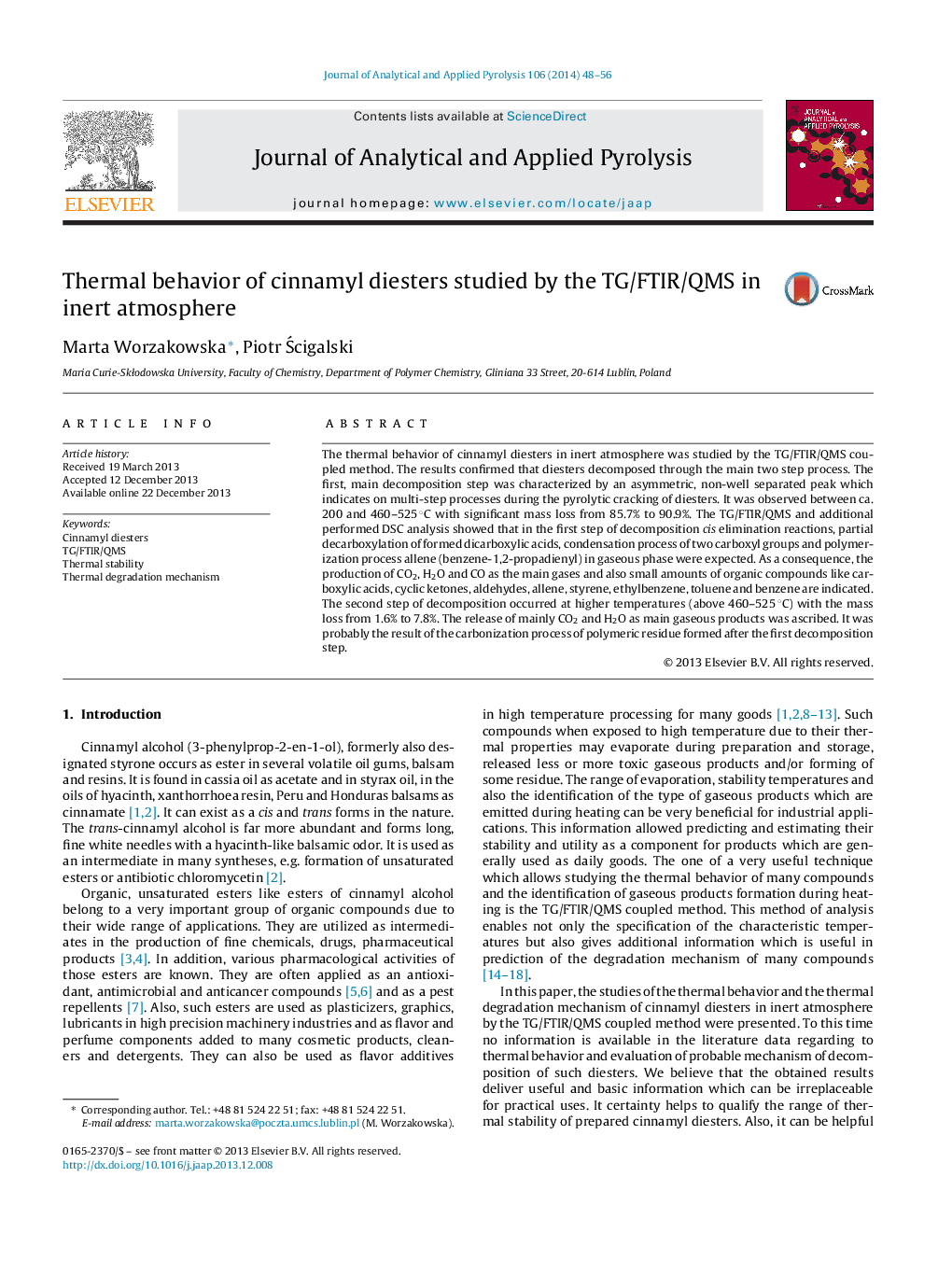| Article ID | Journal | Published Year | Pages | File Type |
|---|---|---|---|---|
| 1196855 | Journal of Analytical and Applied Pyrolysis | 2014 | 9 Pages |
•Thermal behavior of cinnamyl diesters was studied by the TG/FTIR/QMS.•It was found that diesters decomposed through the two step process.•In the first step of decomposition emission of mainly CO2, H2O and CO was observed.•In the second step release of only CO2 and H2O was ascribed.•The cis elimination, decarboxylation, condensation and polymerization were happened.
The thermal behavior of cinnamyl diesters in inert atmosphere was studied by the TG/FTIR/QMS coupled method. The results confirmed that diesters decomposed through the main two step process. The first, main decomposition step was characterized by an asymmetric, non-well separated peak which indicates on multi-step processes during the pyrolytic cracking of diesters. It was observed between ca. 200 and 460–525 °C with significant mass loss from 85.7% to 90.9%. The TG/FTIR/QMS and additional performed DSC analysis showed that in the first step of decomposition cis elimination reactions, partial decarboxylation of formed dicarboxylic acids, condensation process of two carboxyl groups and polymerization process allene (benzene-1,2-propadienyl) in gaseous phase were expected. As a consequence, the production of CO2, H2O and CO as the main gases and also small amounts of organic compounds like carboxylic acids, cyclic ketones, aldehydes, allene, styrene, ethylbenzene, toluene and benzene are indicated. The second step of decomposition occurred at higher temperatures (above 460–525 °C) with the mass loss from 1.6% to 7.8%. The release of mainly CO2 and H2O as main gaseous products was ascribed. It was probably the result of the carbonization process of polymeric residue formed after the first decomposition step.
